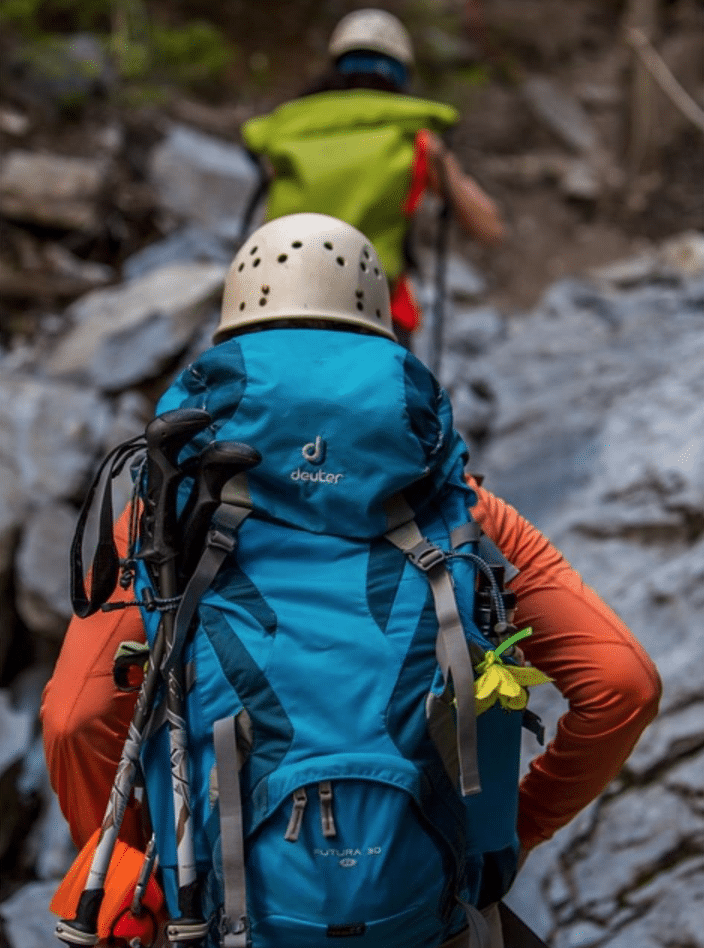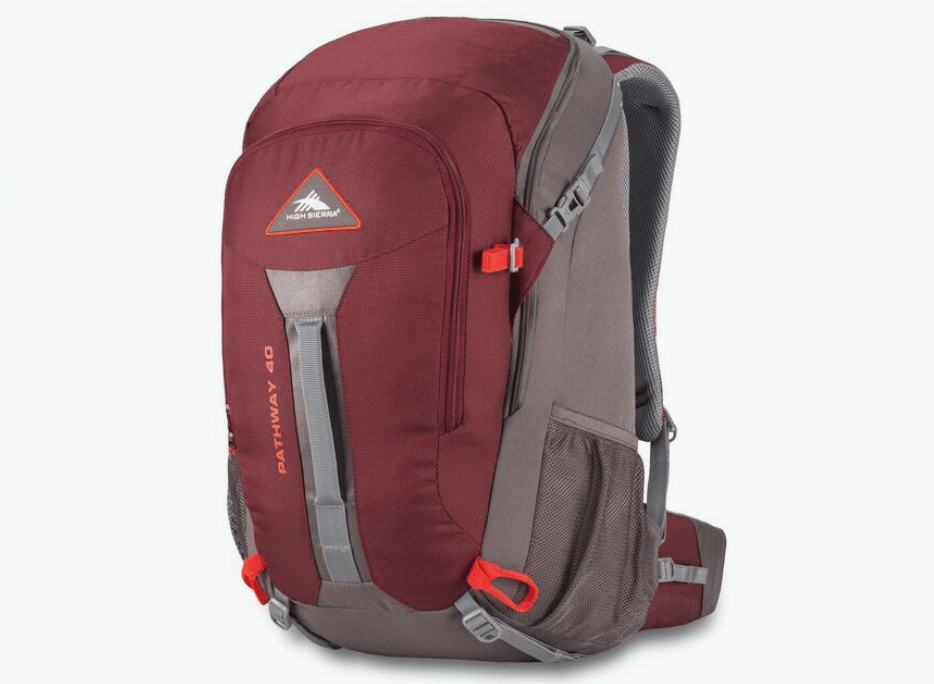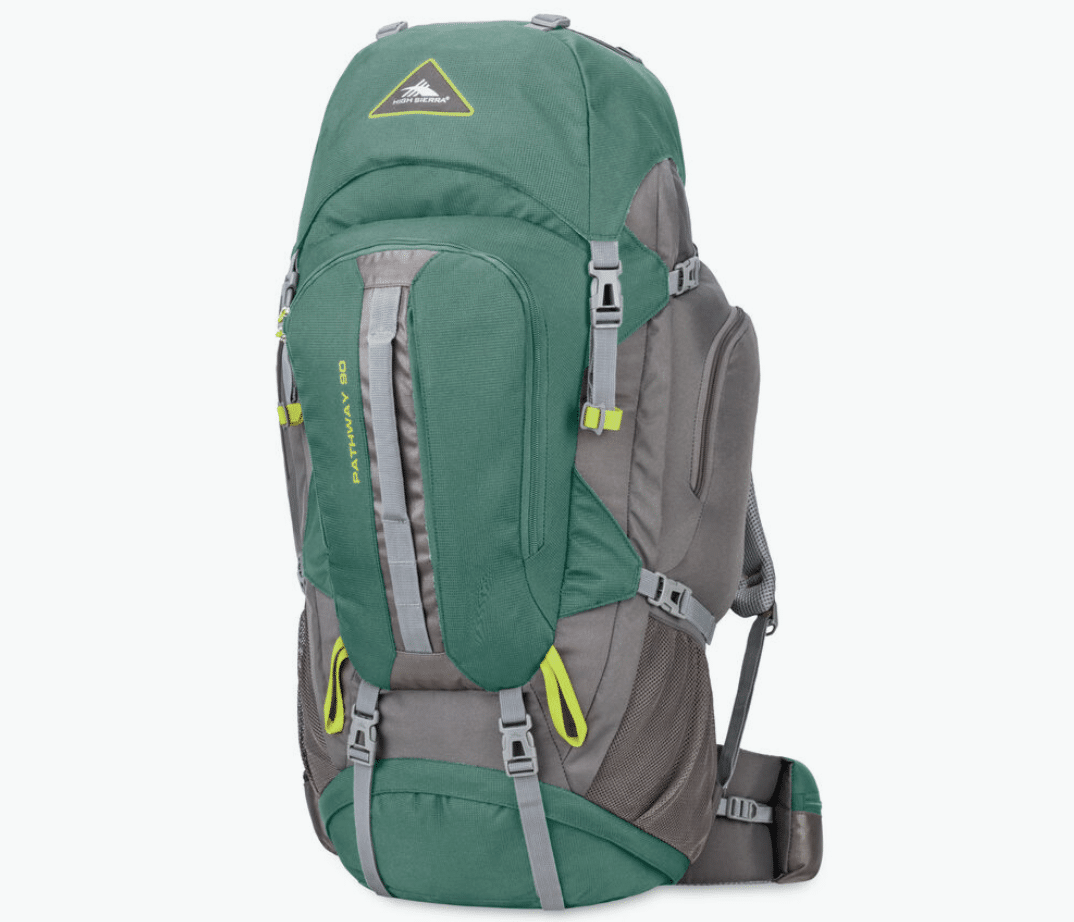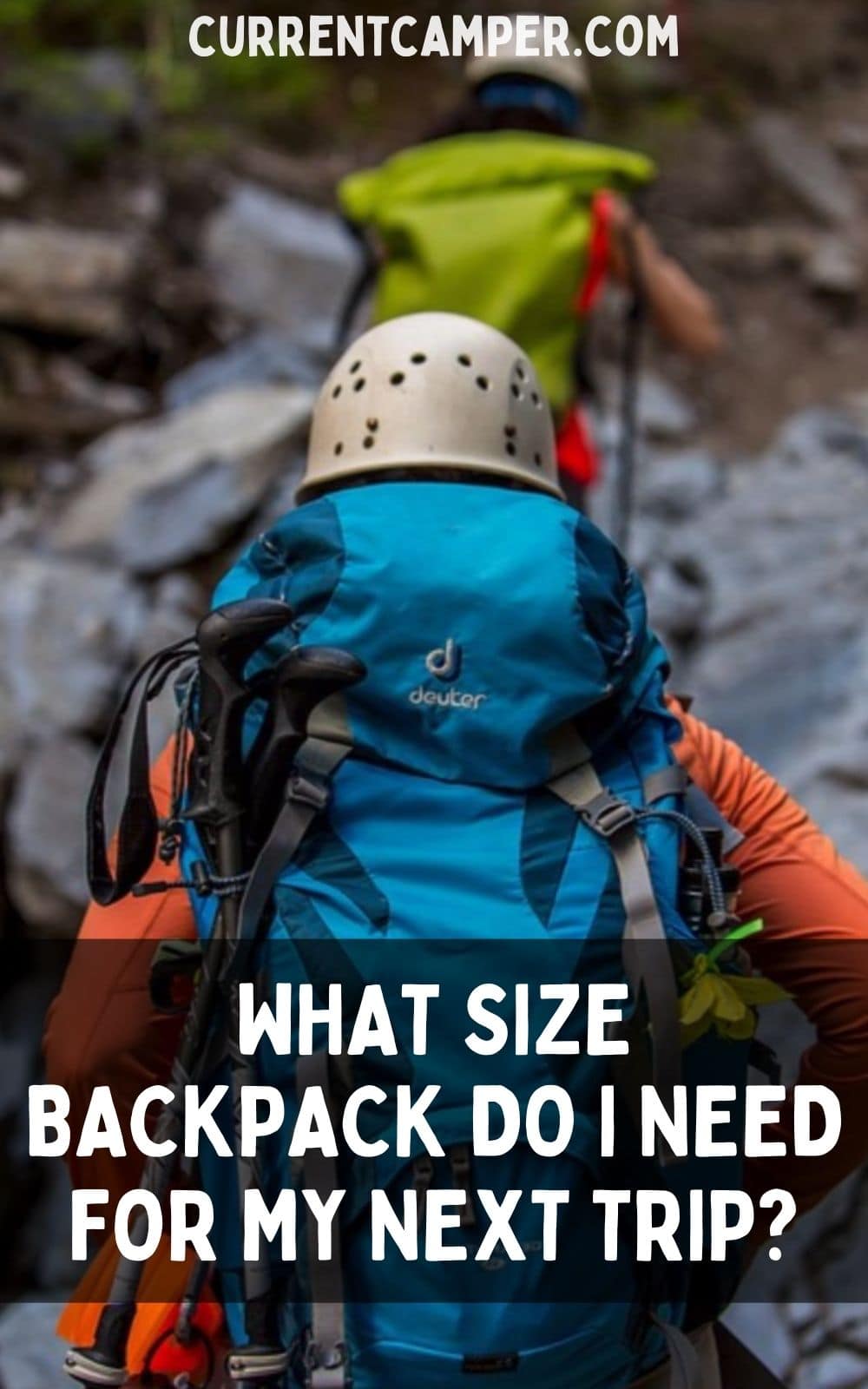
In the market for a new pack but aren’t sure what size backpack you need?
You need only answer a few questions to narrow down your potential candidates:
- How long will I be gone?
- How much stuff am I bringing?
- What does it all weigh?
Figure out those three things, and your options become much clearer.
In the article below we’ll cover why these questions are important, what size packs are best for different types of trips, and how your total pack weight plays a factor in choosing the right bag for you.
Why Volume And Weight Are Important
When we talk about the volume of a backpack, we’re referring to its gear capacity measured in total space.
Volume measurements typically include both the main internal pocket of a backpack and all of the auxiliary storage like hipbelt pockets and water bottle pouches added together.
So the total volume of all your gear, plus the volume of your food and water for however many days you’ll be out = The minimum amount of space you need.
Volume doesn’t take weight into account, but you should be wary of weight when determining what size backpack you’ll need as well. Some backpacks have specific limits on the total amount of weight they’re designed to carry.
Lightweight packs might have 70+ liters of space, but only support 40 pounds of gear comfortably. If you can keep your total weight down, you can enjoy the benefits of extra volume in a significantly lighter pack.
If you’re the type that likes to bring plenty of camp luxuries, however, make sure the pack you buy has both the volume and the weight capacity you need for all your stuff.
What Size Backpack Is Best For Your Trip:
Backpacks come in a variety of shapes and sizes to say the least.
Looking for a “one-size-fits-all” backpack might sound tempting, but there’s a reason such a wide range of backpacks are out there today.
Generally speaking, weight is the enemy of backpacking. The larger a pack is, the more it’s going to weigh before you even start loading gear into it.
If you buy a 90 liter pack but only need 60 liters of space, you’ll be carrying around an extra pound or two at all times for no good reason. There are exceptions to the rule, of course, and the weights of “ultralight” backpacks with minimalist or non-existent frames are shrinking every year while their popularity steadily grows.
We’ll touch on ultralight packs later, but for the sake of discussion, this article will focus mainly on the typical internal frame backpacks we see today.
Also, notice we measure the backpacking trips below in nights rather than days. That’s because once you’ve got your core gear list together, the main variable between a three day trip and a five day trip is food and fuel. One less night in the woods means one (or two) less meals to plan on cooking.
Quick Trips And Long Weekends: 1 to 3 Nights
Recommended Pack Size: 30 – 60 Liters

A short weekend trip is the quickest and easiest to pack for. You need less food, less fuel, less clothing, and (depending on the forecast) you might be able to skip rain gear entirely.
If you keep your loadout minimal, your shelter small, and prefer down to synthetic insulation, you’ll be able to fit all your food and essentials for a quick weekend inside a 30 liter bag.
Keep in mind that might mean doing little to no cooking (you definitely won’t have room for a cookpot), bringing only the clothes on your back (and extra socks, of course), and having minimal creature comforts in camp.
What size backpack suits you best if roughing it isn’t your style?
Personally I like to have at least 50 liters of storage for any overnight trip. 50 liters affords me a generously sized two person tent, all the food and cooking options I like, and room for some of the little extras that make camp more enjoyable like camp shoes and a sufficient amount of bourbon.
If you’re not really looking to go “ultralight” and have interest in trying longer trips in the future, I’d recommend getting something close to the 60 liter range so you’ll have a bag that pulls double duty.
Typical Multiday Backpacking Trip: 3 to 5 Nights
Recommended Pack Size: 50 to 80 Liters

Longer trips require a lot more food and extra fuel to cook it. The more days you tack on, the more that food bag swells.
Extra days also mean more variables in the weather.
Unless you’re hiking Southern California in the dry season, that probably means you need some degree of protection from the elements. Depending on the forecast, that could include rain gear, extra layers, extra sunscreen, or all the above. Whatever you decide on, you’ll need room to carry it.
My go-to pack for multiday trips is 68 liters, and I’ve usually got a good 5-10 liters to spare. Sixty to seventy liters is the sweet spot for most hikers.
If you never leave home without a cast iron skillet and/or the family photo album, suit yourself, but you’ll need a big ol’ pack to go along with it. If you’ve never owned or laid eyes on an 80+ liter pack, let me be the first to tell you: They are comically large when fully packed.
Yes, they’ll compress down significantly when you don’t need the full size, but 80 liters is overkill and adds extra ounces to your “big three” base weight. Unless you have mountaineering plans in the near future, I’d steer clear of anything that large.
Extended Backpacking Treks: 5+ Nights
Recommended Pack Size: 70 to 100 Liters

Many backpacking trips lasting a week or more will include a stop along the way to resupply. Not everyone wants to break up their solitude with a detour into nearby towns though, and some trips don’t give the option at all.
If you’re trying to do over five nights in the woods with some semblance of comfort, chances are you’re actually going to need at least 70 liters of space to store all your food, fuel, trash, and extra gear.
A pack over 70 liters also becomes a necessity when you’re hiking in winter conditions. Extra layers, heavy-duty sleeping bags, and four season tents all take up more space than their three season counterparts.
What About “Ultralight” Backpacks?

If the idea of hiking with as little weight as possible sounds good to you, you aren’t alone.
Most backpackers carry a base weight around 30 pounds or more. That doesn’t include food or water.
Ultralight setups, on the other hand, commonly weigh in below 15 pounds.
How they get to that point is an article of its own, but just know that you’ll either be spending a lot of extra money to get the lightest high-tech gear on the market, or you’ll be leaving a lot of stuff at home.
Whether they have internal frames, partial frames, or no frames at all, ultralight packs are limited in their carrying capacity.
Most require your entire load out (food and water included) to weigh in around 30 pounds or less. That weight restriction mandates some pretty minimalist gear, and some advanced outdoor skills as well.
Ultralight shelters are often little more than a tarp, a trekking pole, and bug netting. Cooking systems, sleeping systems, and gear in general tends to be similarly sparse.
Carrying an ultralight backpack typically means you enjoy roughing it in the strongest sense of the word. If that doesn’t sound like you, I’d recommend sticking with a conventional internal frame pack.
Pin it!
